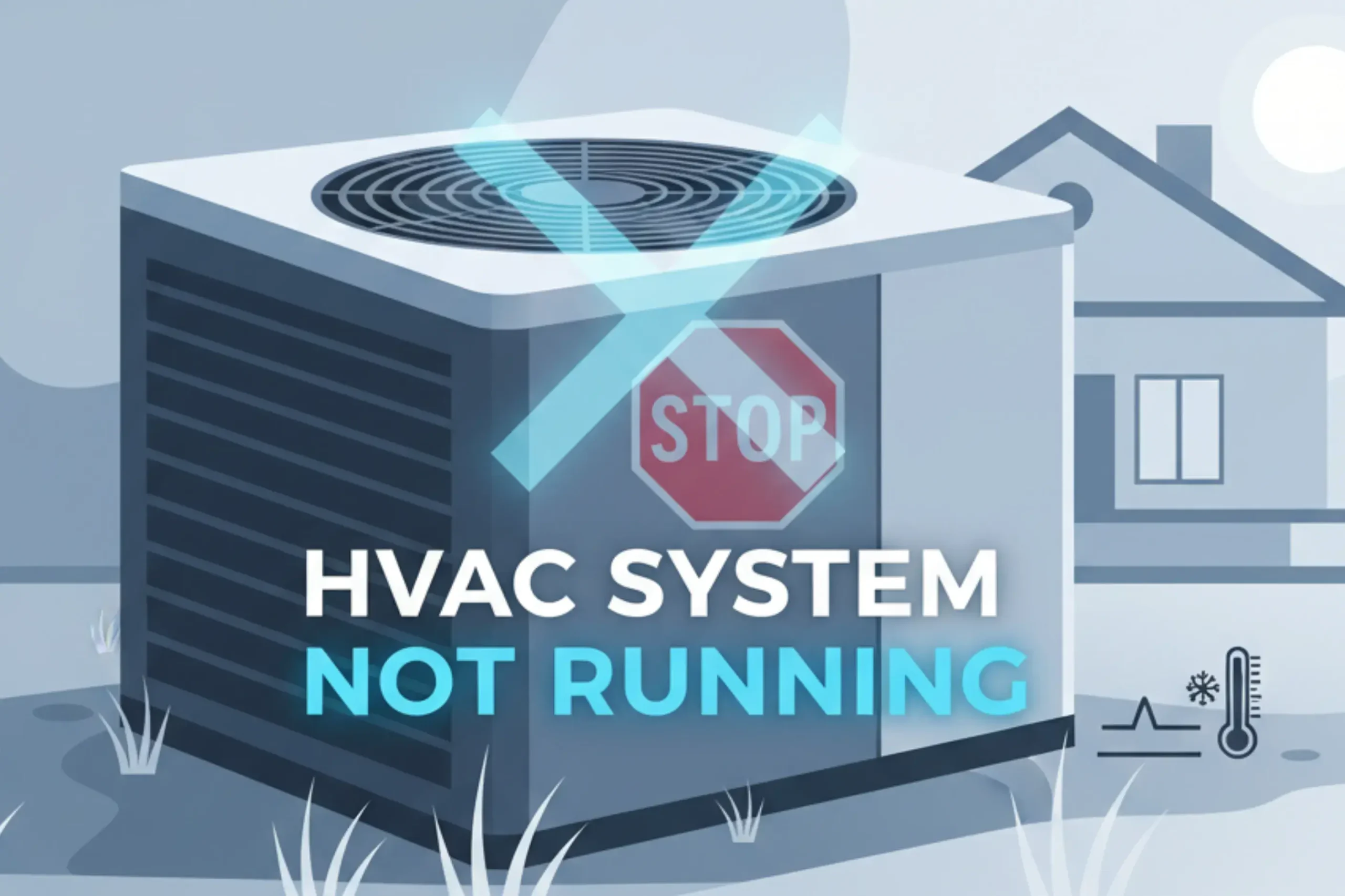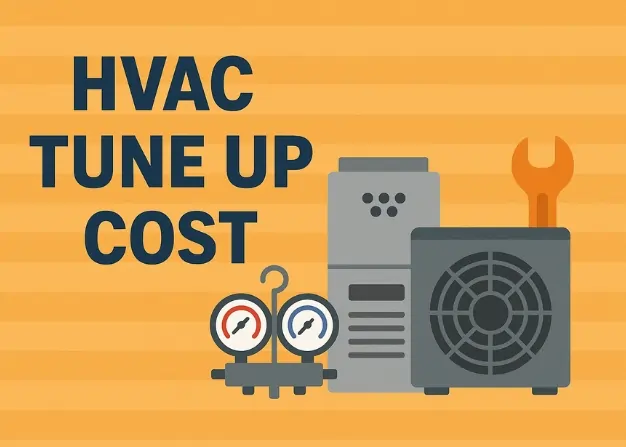Your thermostat is the brain of your heating and cooling system. When it stops working, your AC or furnace may not turn on, temperatures can feel off, and your comfort takes a hit. Whether you have a smart thermostat, a traditional digital unit, or an older manual model, problems can happen for many reasons.
In this guide, we will cover why your thermostat might not be working, how to troubleshoot the issue, and when to call the HVAC experts at United States Solutions for professional help.
Signs a Thermostat Not Working Properly
Before diving into the causes, it’s important to recognize the symptoms of a thermostat problem. Look for:
- Blank display, no power or screen response
- There are incorrect temperature readings, your room feels hotter or colder than the setting
- AC or heat not turning on – system won’t respond to temperature changes
- You will observe short cycling as the system turns on and off frequently
- There will be unresponsive controls as pressing buttons or using the app doesn’t work
If you notice one or more of these issues, it’s time to figure out the root cause.
Common Reasons a Thermostat Stops Working

Dead Batteries
For many digital and programmable thermostats, batteries are the primary power source. If your thermostat screen is blank or flickering, weak or dead batteries might be to blame.
Solution: Replace the batteries and see if the display returns.
Tripped Circuit Breaker
Sometimes the thermostat loses power because the breaker controlling your HVAC system has tripped.
Solution: Check your electrical panel and reset the breaker if necessary. If it trips again, there may be a wiring or equipment issue.
Dirty or Damaged Sensors
The temperature sensor inside your thermostat measures the room’s climate. Dirt, dust, or a faulty sensor can cause inaccurate readings, which means your AC or furnace won’t run properly.
Solution: Gently clean the thermostat interior with a dry cloth or soft brush. If readings remain incorrect, the sensor may need replacement.
Loose or Damaged Wiring
Over time, wires inside the thermostat can loosen or corrode, interrupting communication with your HVAC system.
Solution: If you’re comfortable, remove the thermostat cover and inspect the wiring for frays, corrosion, or loose connections. Always turn off the power before touching wires.
Wrong Settings
Sometimes the problem is simply that the thermostat is set incorrectly.
Solution:
- Make sure it’s on Cool or Heat depending on the season
- Check the fan setting (Auto vs. On)
- Ensure the set temperature is correct
Software or Programming Issues
Smart thermostats rely on software updates. Therefore, a glitch or outdated firmware can cause them to malfunction.
Solution: Restart the thermostat, check for updates, and reconfigure your schedule.
Age and Wear
Like any device, thermostats don’t last forever. A typical unit lasts about 10 years before performance starts to decline.
Solution: If yours is older, replacing it with a modern energy-efficient model may be the best fix.
Troubleshooting Steps You Can Try
Here’s a step-by-step checklist before calling for repairs:
- Check the power: Replace batteries or make sure the breaker is on
- Inspect the display: Look for error codes or blank screens
- Clean the unit: Remove dust from vents and sensors
- Test the settings: Ensure mode and temperature are correct
- Restart the thermostat: Power cycle or reset to default settings
- Inspect wiring: Look for loose or damaged connections (only if you’re confident working with low-voltage wiring)
When to Call a Professional
If you’ve tried the steps above and your thermostat still isn’t working, it’s time to call the experts. Problems with wiring, the control board, or the HVAC system itself require professional diagnosis.
United States Solutions offers complete thermostat troubleshooting and replacement services. Whether you have a LuxPro thermostat, Honeywell, Nest, or Trane, our team can quickly pinpoint the issue and restore your comfort.
Preventing Thermostat Problems
To keep your thermostat working efficiently:
- Replace batteries annually
- Clean the thermostat every few months
- Avoid placing it near heat sources, direct sunlight, or cold drafts
- Schedule regular HVAC maintenance to keep the system running smoothly
Upgrading to a Smart Thermostat
If your thermostat is outdated or giving you repeated trouble, upgrading to a smart model can save energy and improve comfort. Smart thermostats offer:
- Remote control via smartphone apps
- Learning schedules based on your habits
- Energy usage reports
- Better temperature accuracy
Our team at United States Solutions can recommend and install a thermostat that fits your needs and budget.
Here’s a natural, SEO-friendly FAQ section for your article on Why is My Thermostat Not Working, written in a human tone and incorporating your keywords.
Frequently Asked Questions
1. Why is my thermostat not working even after changing the batteries?
If your thermostat still doesn’t work after replacing the batteries, the problem could be a tripped circuit breaker, loose wiring, or an internal malfunction. In some cases, the thermostat may need a factory reset or professional inspection.
2. Why is my AC thermostat not turning on?
An AC thermostat may not turn on due to power supply issues, a blown fuse, faulty wiring, or damage to the thermostat’s control board. Sometimes, the issue is as simple as a dead battery or an incorrect mode setting.
3. How do I know if my thermostat is bad?
Signs of a faulty thermostat include inaccurate temperature readings, the AC or heat not turning on when needed, unresponsive controls, or the display not lighting up. If your HVAC system runs inconsistently, the thermostat could be the culprit.
4. Can a thermostat cause my AC not to work?
Yes. If your thermostat is not working properly, it won’t send the correct signals to your AC unit. This can prevent the cooling system from starting or cause it to shut off unexpectedly.
5. How much does it cost to replace a thermostat?
The cost to replace a thermostat can range from $100 to $500 depending on the type and brand. Smart thermostats tend to be more expensive but offer energy savings over time.
Final Thoughts
A thermostat that’s not working can quickly turn your home into an uncomfortable place. From dead batteries to wiring issues, many problems are simple to fix, while others require professional help.
If your thermostat is giving you trouble, we are here to help you get back to a comfortable home. Our HVAC experts provide fast, reliable service and can handle any thermostat issue, big or small.






